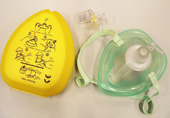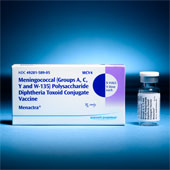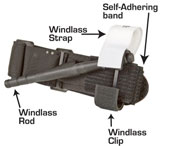June 1st, 2011 by Paul Auerbach, M.D. in Health Tips, Research
No Comments »

 When a person performs cardiopulmonary (heart and lung) resuscitation (CPR), it is sometimes recommended to provide rescue breathing. This is certainly the case when the primary cause of the victim’s difficulty relates to failure to breathe adequately, such as with a drowning episode. When CPR first arrived on the landscape, laypersons were trained to perform mouth-to-mouth breathing (for adults) or mouth-to-mouth and nose breathing (for infants and small children).
When a person performs cardiopulmonary (heart and lung) resuscitation (CPR), it is sometimes recommended to provide rescue breathing. This is certainly the case when the primary cause of the victim’s difficulty relates to failure to breathe adequately, such as with a drowning episode. When CPR first arrived on the landscape, laypersons were trained to perform mouth-to-mouth breathing (for adults) or mouth-to-mouth and nose breathing (for infants and small children).
Following growing concern about transmission of diseases from blood and body fluids, laypersons were introduced to using masks or something similar to allow them to provide breathing assistance (“artificial respiration,” “artificial ventilation,” “rescue breathing,” etc.) to non-breathing persons. Masks have been used for decades by professional rescuers for ventilating patients, often in conjunction with the use of bags in a “bag-valve-mask” configuration. The valve between the mask and bag provides for one-way flow and prevents the backwash of vomitus, blood, liquid from the lungs, or other fluids that might diminish the effectiveness of the technique.
A number of excellent masks and face shields are available on the market for rescuers to be able to (relatively) safely blow air into a victim’s lungs. One example is Read more »
This post, CPR: Mouth-to-Mouth Breathing May Have Some Advantages Over Mask-Assisted Breathing, was originally published on
Healthine.com by Paul Auerbach, M.D..
May 26th, 2011 by Paul Auerbach, M.D. in Health Tips
No Comments »

 One of the most feared infectious diseases for outdoor travelers—particularly children and young adults—meningitis caused by the bacterium Neisseria meningitidis (meningococcus). The infection can appear in outbreaks, most commonly abroad, particularly in sub-Saharan Africa and China.
One of the most feared infectious diseases for outdoor travelers—particularly children and young adults—meningitis caused by the bacterium Neisseria meningitidis (meningococcus). The infection can appear in outbreaks, most commonly abroad, particularly in sub-Saharan Africa and China.
The infection is spread in the respiratory secretions of humans. The disease appears in many forms, the most common of which are meningitis, pneumonia, and disseminated bacterial infection. The typical presentation of meningitis is fever, headache, and a stiff neck. If the cause is meningococcus, the victim may develop a skin rash, which consists of red dots or bumps, or a flat, more patchy dark red discoloration.
If the dark red dots begin to enlarge and coalesce into large purplish bruise-like discolorations, this is a bad sign. In the worst cases, a victim can develop shock, respiratory failure, diffuse bleeding, and death. Approximately one in 10 victims of meningococcal meningitis dies. Read more »
This post, Do You Know How To Recognize Deadly Bacterial Meningitis?, was originally published on
Healthine.com by Paul Auerbach, M.D..
May 23rd, 2011 by Paul Auerbach, M.D. in Health Tips
1 Comment »


The Combat Application Tourniquet Dr. Brad Bennett provided an excellent workshop at the 2010 Wilderness Medical Society annual meeting in Snowmass, Colorado on how to manage severe bleeding, based on his work with the Committee on Tactical Combat Casualty Care. From time to time,
wilderness medicine practitioners encounter situations of severe bleeding, so this information is essential for anyone responsible for the health and safety of outdoor explorers and adventurers.
In a simple algorithm, we learned that the first attempt to control bleeding is almost always direct hand pressure. This is followed by application of a pressure bandage. If that is successful, the victim then is evacuated. If the pressure bandage does not adequately control bleeding on the torso of the victim, then a hemostatic (stops bleeding) substance is applied prior to evacuation. If bleeding from an arm or leg threatens the victim’s life, a tourniquet may be required. A hemostatic agent that is being used with increasing frequency is QuikClot Combat Gauze. Tourniquets include the Combat
Application Tourniquet (“C-A-T”). Using any of these modalities requires instruction and preparation. Read more »
This post, How To Stop Bleeding: The Combat Application Tourniquet And QuikClot, was originally published on
Healthine.com by Paul Auerbach, M.D..
April 28th, 2011 by Paul Auerbach, M.D. in Health Tips
2 Comments »

 Along with blisters and sprains, muscle strains are among the most common afflictions for active persons in the outdoors. Common medical dogma is to use the “RICE” approach for sprains and strains of—rest, ice (application of cold), compression, and elevation.
Along with blisters and sprains, muscle strains are among the most common afflictions for active persons in the outdoors. Common medical dogma is to use the “RICE” approach for sprains and strains of—rest, ice (application of cold), compression, and elevation.
This is more applicable to sprains (e.g., an ankle sprain) than to strains, because the sprained body part is usually a limb (ankle, knee, wrist)
that is amenable to this approach. Strains more often involve larger muscle
groups, such as those in the back, chest, thigh or abdomen, or difficult-to-approach areas, such as the neck or groin.
Prevailing theory for treatment of a muscle strain is that one applies external cold for 24 to 48 hours, and discontinues it after 72 hours, at which time one begins application of external heat. The rationale is
that swelling (from leakage of blood and tissue fluid) and inflammation prevail in the first two days, and that after three days, one wishes to increase local circulation and augment reabsorption of the fluid that has collected. There is some science to this, and these recommendations have been around for as long as I can recall. Read more »
This post, Muscle Strain: Should You Treat It With Hot Packs Or Cold Packs?, was originally published on
Healthine.com by Paul Auerbach, M.D..
April 18th, 2011 by Paul Auerbach, M.D. in Health Tips
No Comments »

 Wilderness medicine folks are often considered to be “gearheads.” That is, we love to try out new outdoor equipment, whether it is for our activities, search and rescue, or personal safety. Improvisation is important, but it’s better to have what you need, particularly if you can pack light and accomplish your mission without unnecessary bulk and weight. There are numerous suppliers of equipment online. From time to time, as I am made aware of these, I will let you know.
Wilderness medicine folks are often considered to be “gearheads.” That is, we love to try out new outdoor equipment, whether it is for our activities, search and rescue, or personal safety. Improvisation is important, but it’s better to have what you need, particularly if you can pack light and accomplish your mission without unnecessary bulk and weight. There are numerous suppliers of equipment online. From time to time, as I am made aware of these, I will let you know.
Rescue Essentials is a frequent exhibitor at wilderness medicine continuing medical education meetings, and so I have become familiar with their carried product lines.
Importantly, Rescue Essentials carries the complete product line for SAM
Medical Products, which include the SAM Splint series and BlistOBan blister
(prevention) bandages. The company sells equipment for persons who respond to outdoor medicine situations, tactical medics, search and rescue personnel, and wilderness emergency medical technicians.
As a reminder of what a layperson might need to consider carrying in order to be prepared to assist a person outdoors in need of medical attention, here is a list that appears in the 5th edition of Medicine for the Outdoors. From this list, one would select the desired items: Read more »
This post, Emergency Rescue Essentials: The Outdoor Gear You Need, was originally published on
Healthine.com by Paul Auerbach, M.D..
 When a person performs cardiopulmonary (heart and lung) resuscitation (CPR), it is sometimes recommended to provide rescue breathing. This is certainly the case when the primary cause of the victim’s difficulty relates to failure to breathe adequately, such as with a drowning episode. When CPR first arrived on the landscape, laypersons were trained to perform mouth-to-mouth breathing (for adults) or mouth-to-mouth and nose breathing (for infants and small children).
When a person performs cardiopulmonary (heart and lung) resuscitation (CPR), it is sometimes recommended to provide rescue breathing. This is certainly the case when the primary cause of the victim’s difficulty relates to failure to breathe adequately, such as with a drowning episode. When CPR first arrived on the landscape, laypersons were trained to perform mouth-to-mouth breathing (for adults) or mouth-to-mouth and nose breathing (for infants and small children).


 One of the most feared infectious diseases for outdoor travelers—particularly children and young adults—meningitis caused by the bacterium Neisseria meningitidis (meningococcus). The infection can appear in outbreaks, most commonly abroad, particularly in sub-Saharan Africa and China.
One of the most feared infectious diseases for outdoor travelers—particularly children and young adults—meningitis caused by the bacterium Neisseria meningitidis (meningococcus). The infection can appear in outbreaks, most commonly abroad, particularly in sub-Saharan Africa and China.
 Along with blisters and sprains, muscle strains are among the most common afflictions for active persons in the outdoors. Common medical dogma is to use the “RICE” approach for sprains and strains of—rest, ice (application of cold), compression, and elevation.
Along with blisters and sprains, muscle strains are among the most common afflictions for active persons in the outdoors. Common medical dogma is to use the “RICE” approach for sprains and strains of—rest, ice (application of cold), compression, and elevation. Wilderness medicine folks are often considered to be “gearheads.” That is, we love to try out new outdoor equipment, whether it is for our activities, search and rescue, or personal safety. Improvisation is important, but it’s better to have what you need, particularly if you can pack light and accomplish your mission without unnecessary bulk and weight. There are numerous suppliers of equipment online. From time to time, as I am made aware of these, I will let you know.
Wilderness medicine folks are often considered to be “gearheads.” That is, we love to try out new outdoor equipment, whether it is for our activities, search and rescue, or personal safety. Improvisation is important, but it’s better to have what you need, particularly if you can pack light and accomplish your mission without unnecessary bulk and weight. There are numerous suppliers of equipment online. From time to time, as I am made aware of these, I will let you know.







